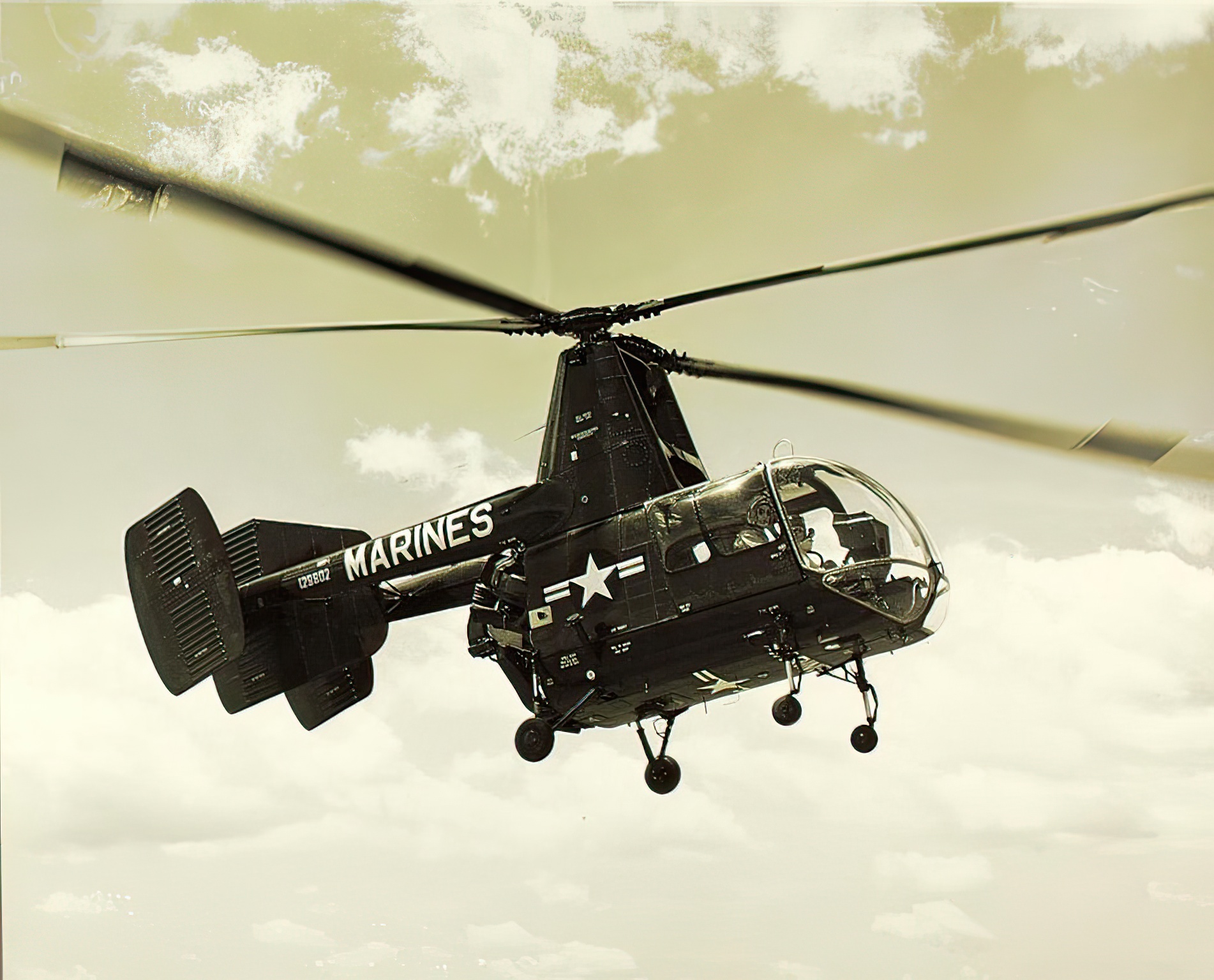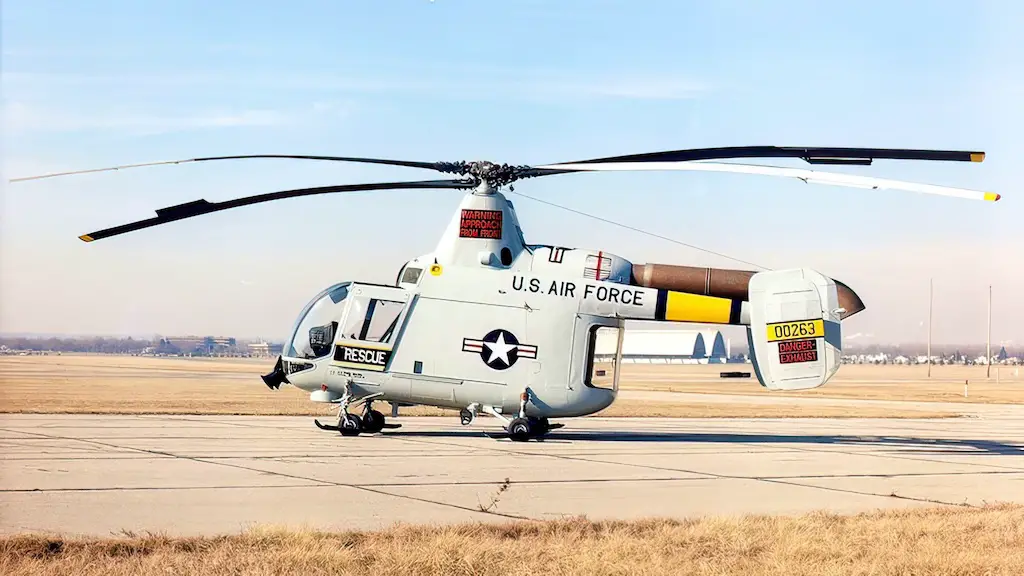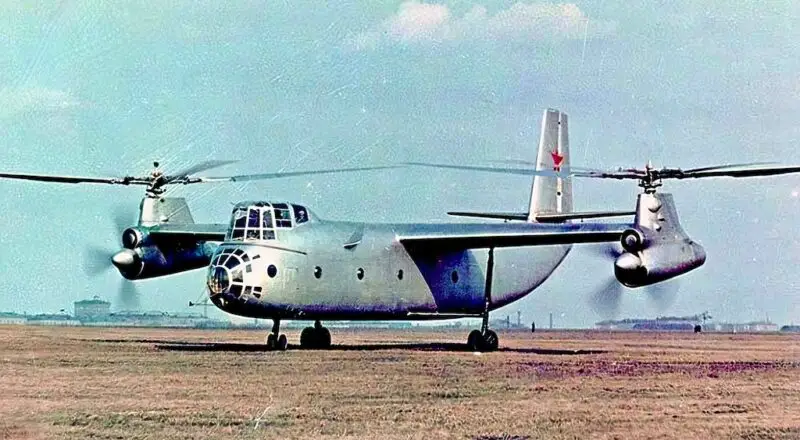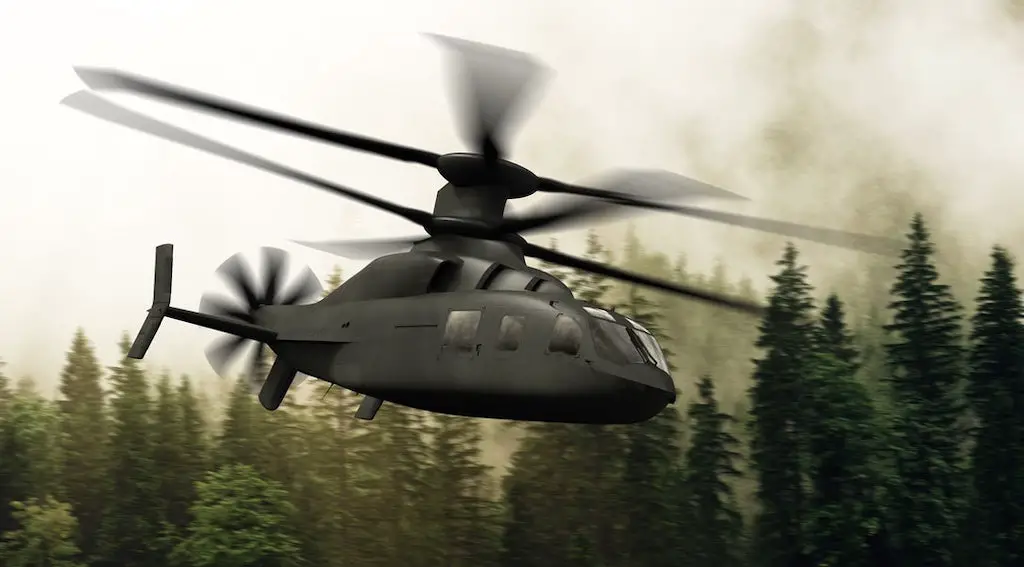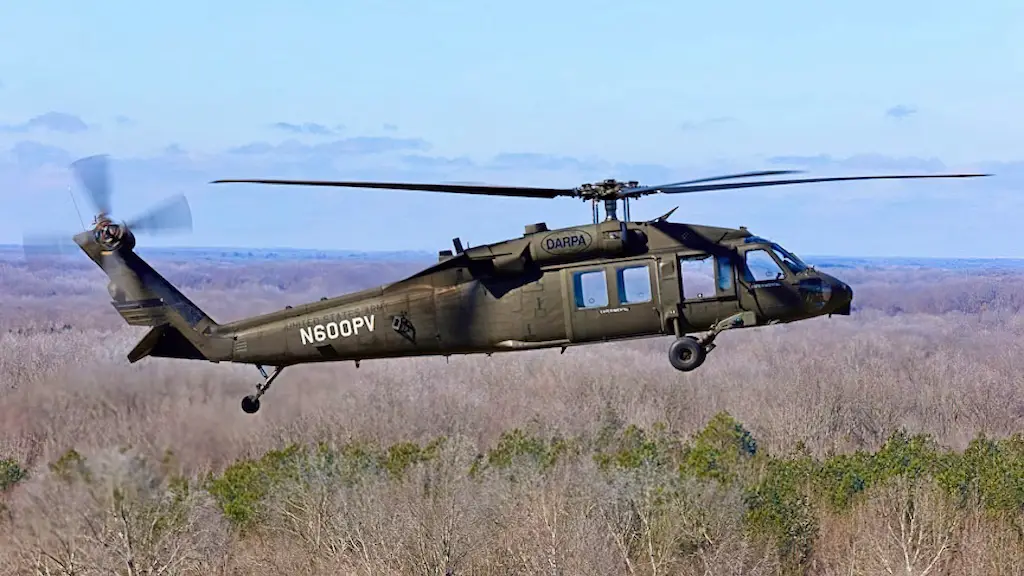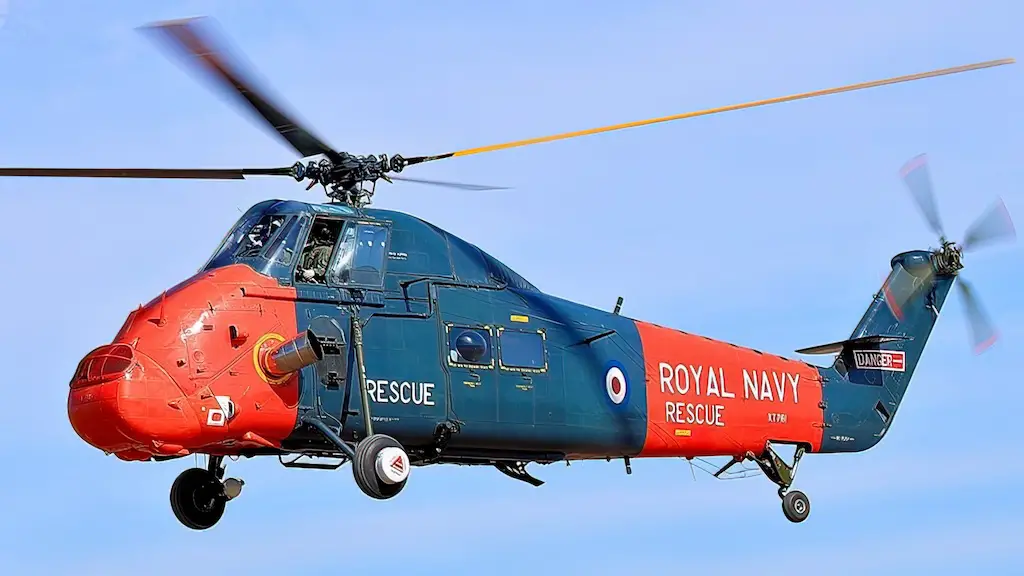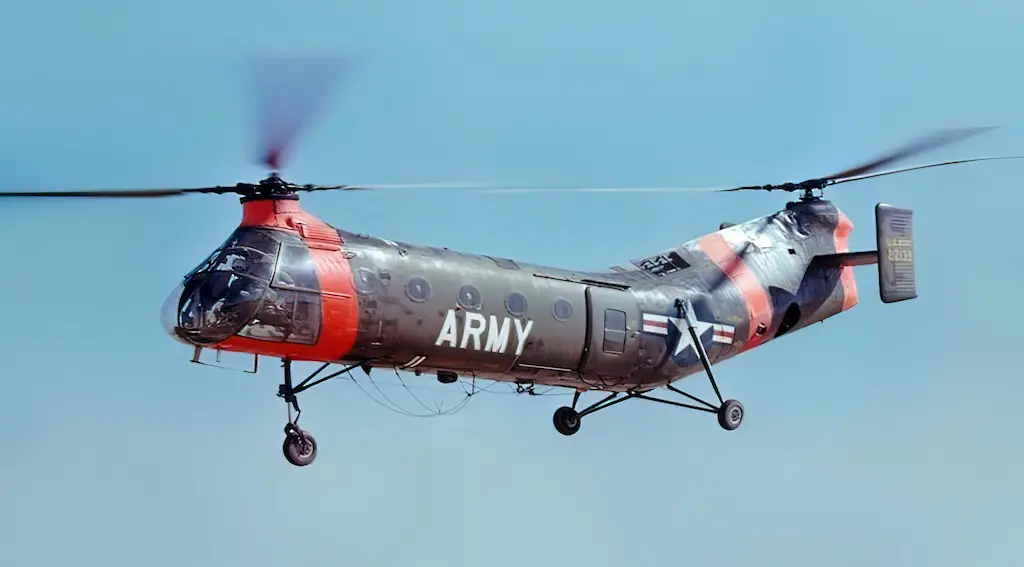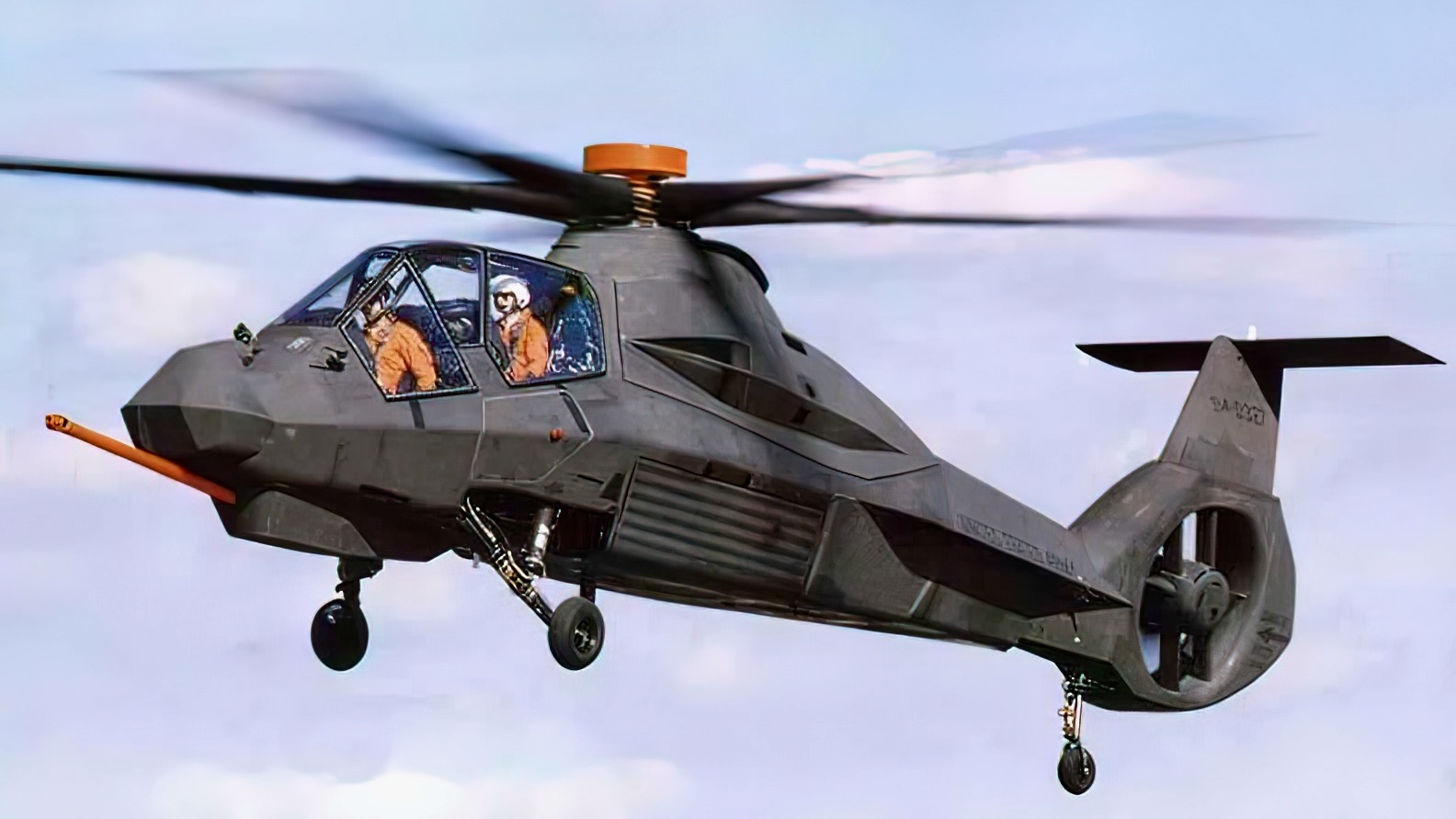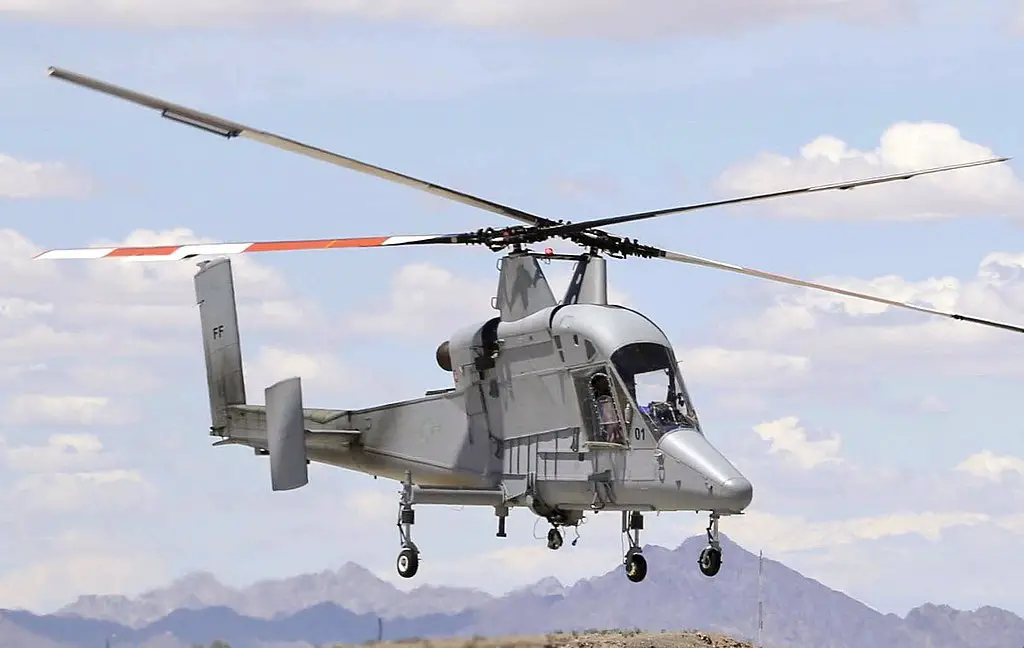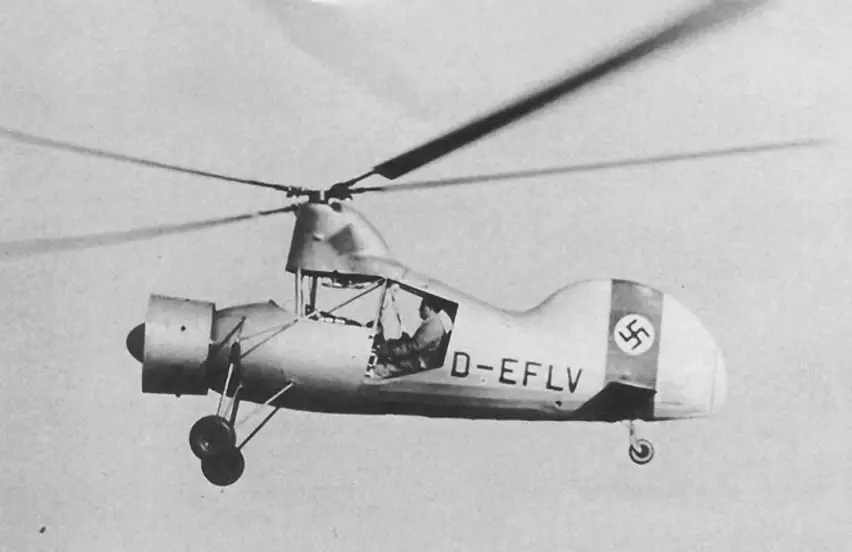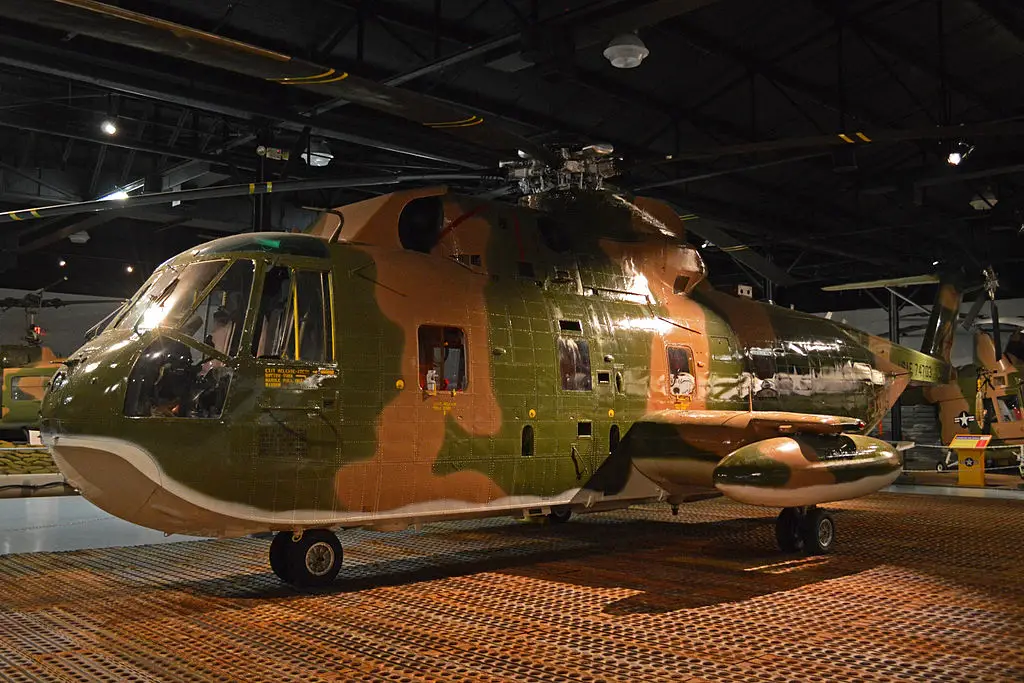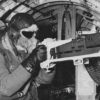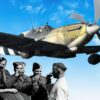The Kaman HH-43 Huskie is a helicopter of a very rare, albeit not unique configuration. It is a synchropter, that is a helicopter with two intermeshing rotors. Despite having such a peculiar configuration, the Huskie was not just an experimental helicopter. It was truly a workhorse, toiling tirelessly as a firefighter and a search and rescue helicopter for the United States military. It did so in peace and in war, flying hundreds of missions in Vietnam. The Huskie’s success also prompted Kaman Corporation to employ the synchropter configuration in one of its later designs, the K-1200 K-Max, which still flies today.
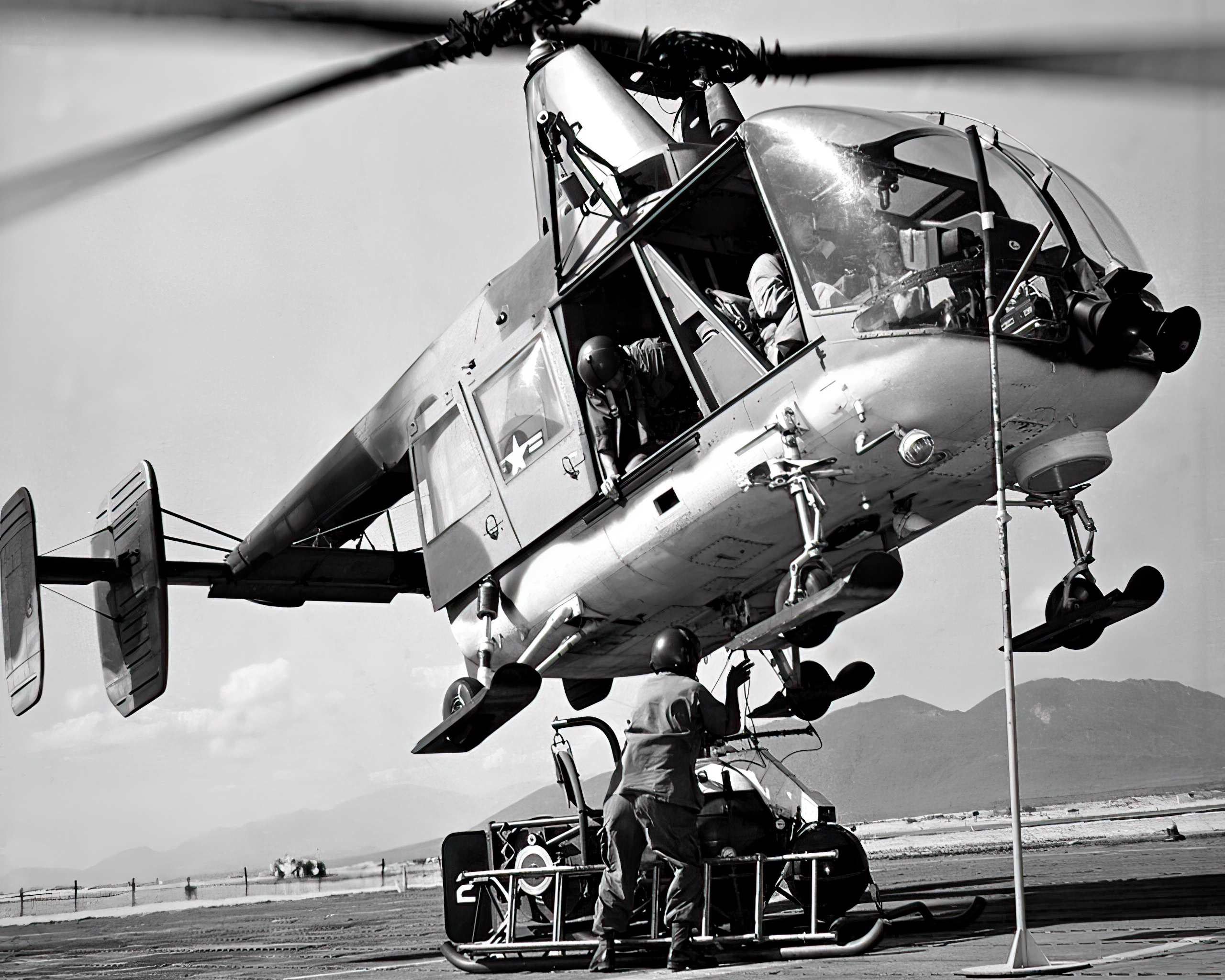
German invention on American soil
The configuration featured by the Huskie—one with a pair of main rotors mounted side-by-side and turning in opposite directions—was pioneered by German aeronautical engineer Anton Flettner in the late 1930s and the early 1940s. He realized this concept in the design of Flettner Fl 265, and later in its upgraded version, Flettner Fl 282 Kolibri.
The Kolibri was quite a decent helicopter for its time and the Luftwaffe had ordered as many as 1,000 to be produced. Germany’s defeat prevented that from happening but didn’t end Flettner’s career. On the contrary, it flourished after he was brought to the US. There Flettner got the post of chief designer of the recently established Kaman Corporation, which gave him the opportunity to further develop his favorite helicopter configuration.
After evaluating several simple experimental designs, the Kaman K-125 and its developments the K-190 and K-225, Kaman set out to build a more practical machine, the Huskie.
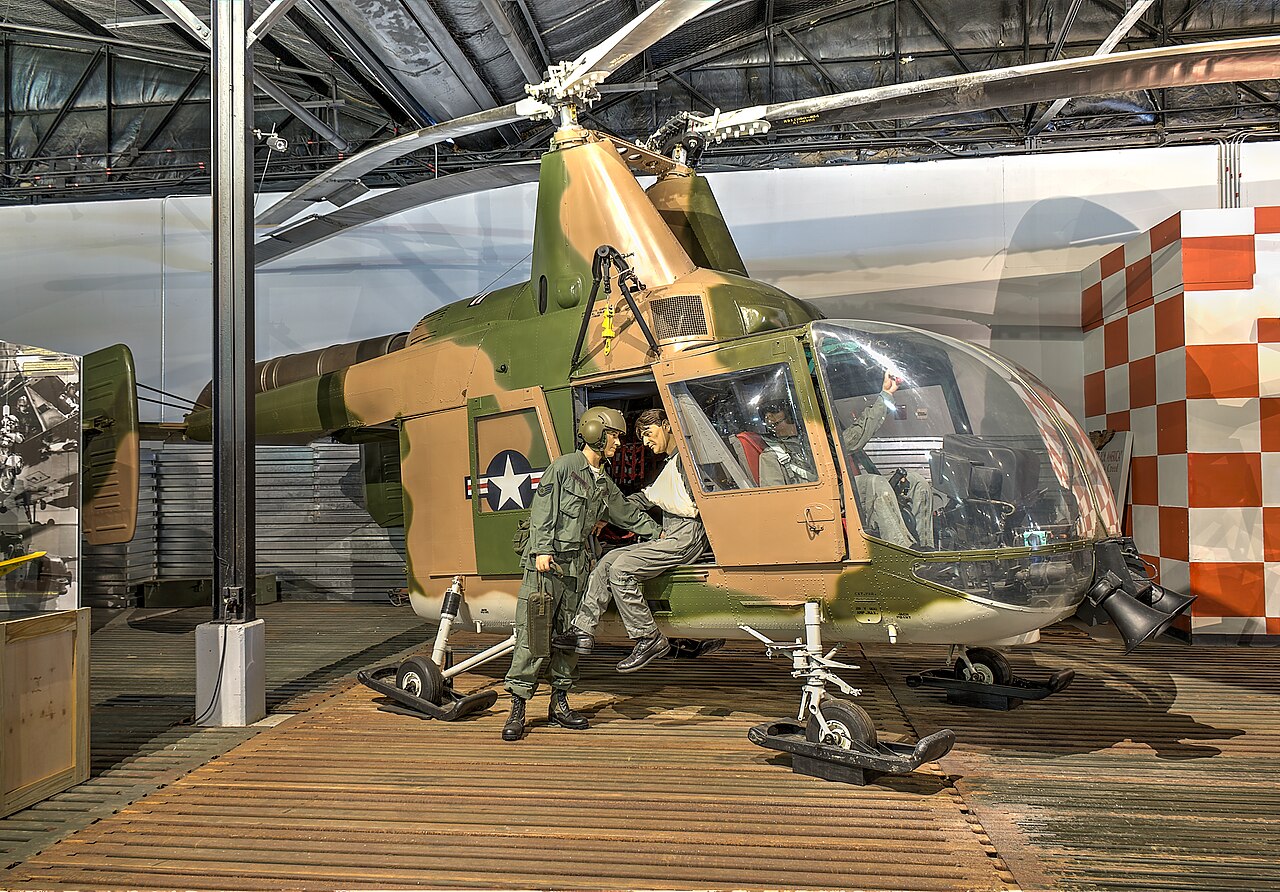
Special features
Due to its intermeshing rotors configuration, the Huskie needed no conventional tail rotor. The design also featured tabs located on the rotor blades’ trailing edges for flight control. These large tabs warped the wooden rotors causing the craft to rise or descend. The use of intermeshing rotors also necessitated some special safety rules: the Huskie should be approached only from the front or from the back. Approaching it from the sides is dangerous as these are the sectors where the blades are at their lowest point, just about seven feet above the ground.
Changing power plants
The first prototype, as well as the production version for the US Navy, designated HTK-1, was powered by a 240-hp Lycoming O-435-4 piston engine. In the US Marine Corps variant, the HOK-1, its place took a much more powerful 600-hp Pratt & Whitney R-1340 Wasp. The US Air Force variant, the HH-43B, was powered by a single Lycoming T53-L-1B turboshaft engine. A second variant for the USAF, the HH-43F was fitted with a single 825-shp Lycoming T53-L-11A turboshaft engine. At one moment Kaman also tested the Huskie with a pair of turbines.
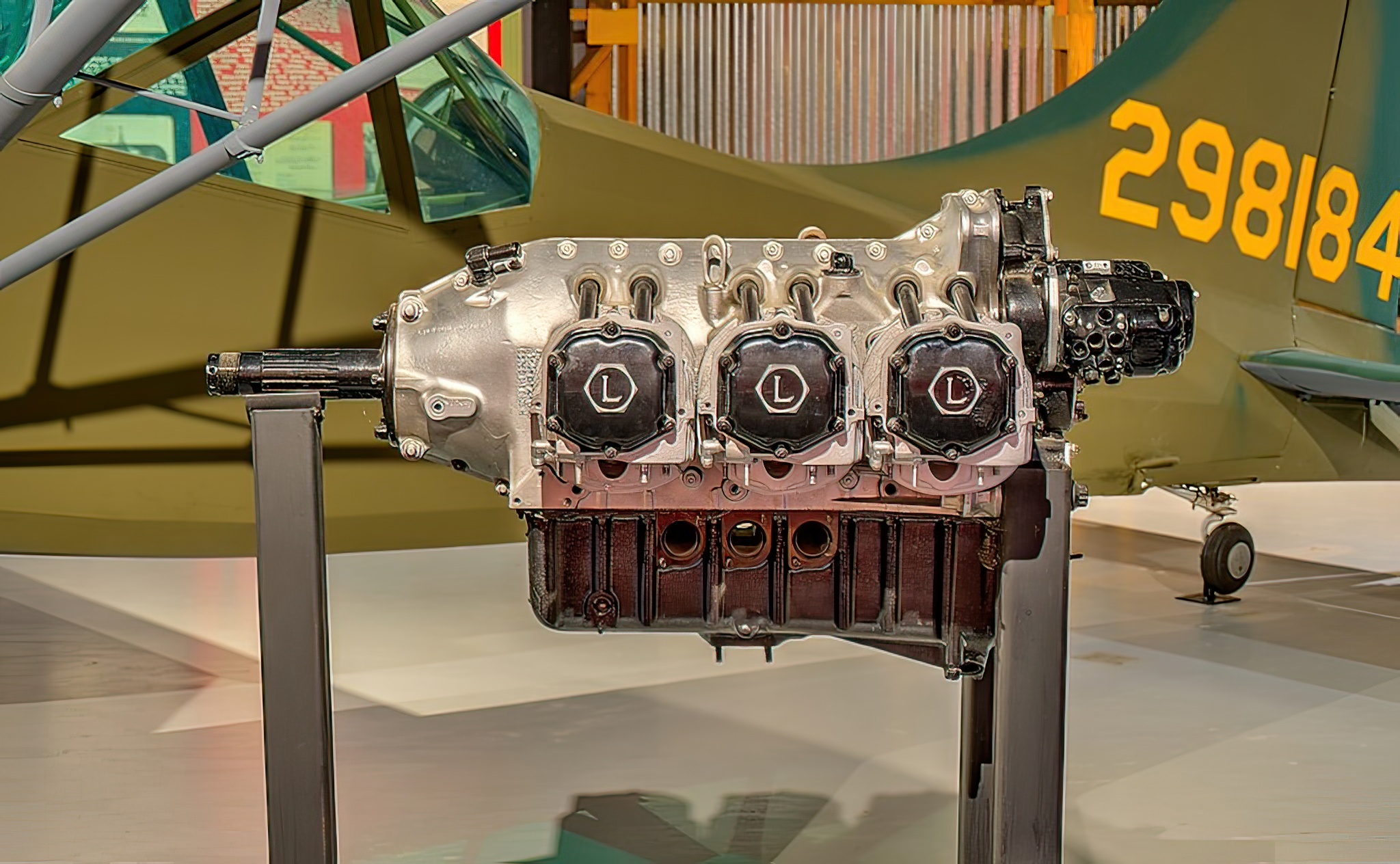
Firefighter bird
The Huskie performed its maiden flight in April 1953 and was first adopted by the US Navy, with the USMC and USAF following suit slightly later. It was a groundbreaking helicopter for its time, setting several world records in the early 1960s, such as time-of-climb to 3000 meters, 6000 meters, and 9000 meters.
The USAF adopted the Huskie in late 1958 and mostly used it for fighting aircraft fires and performing local base rescue (LBR) operations. These helicopters carried 1,000-lb fire suppression kits capable of producing about 700 gallons of fire-fighting foam.
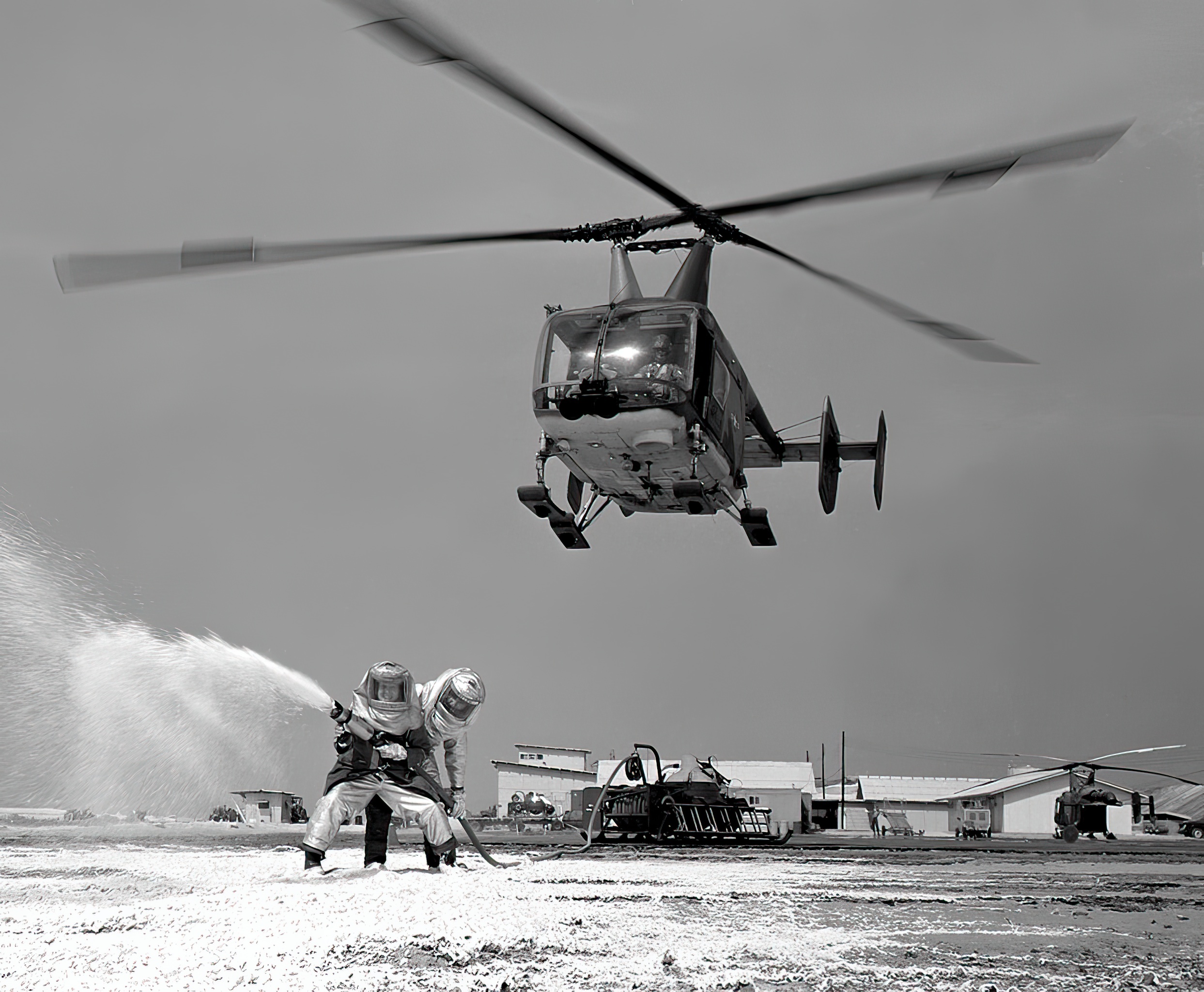
Search & rescue missions in Vietnam
During its years in Vietnam the Huskie—nicknamed “Pedro” for its radio call sign—flew 888 combat rescue missions. That’s more than any other helicopter. In fact, more than all other aircraft combined. Huskies operated from Da Nang and Bien Hoa Air Bases in South Vietnam and from Nakon Phanom Royal Thai Air Base. At the start of the war they were USAF’s only dedicated search and rescue helicopters. Later they were joined in this job by the Sikorsky HH-3E Jolly Green Giant.
After Huskies were retired from the USAF service in the 1970s, many went on to fly for friendly nations, such as Burma, Colombia, Morocco, Pakistan and Thailand. Some more found their place in the timber industry.
